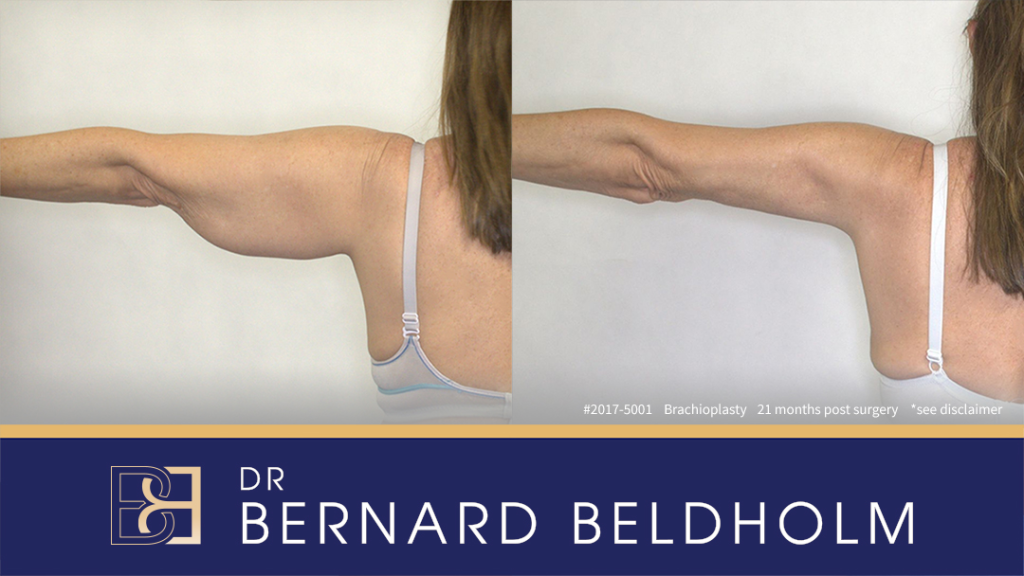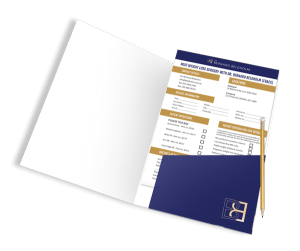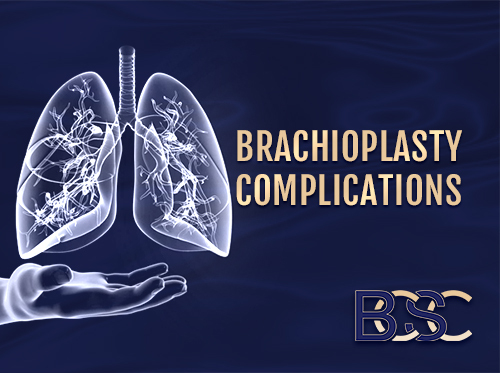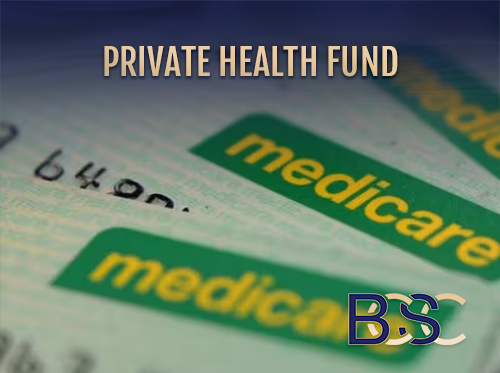How to Sleep After Brachioplasty Surgery
Lying on your back with your arms and head elevated is the sleeping position most surgeons recommend for the first three weeks after arm lift surgery (brachioplasty). This position will reduce swelling, ease inflammation, and lessen the risk of complications during arm lift recovery.
A good night’s sleep is one of the keys to a successful recovery process.
During the initial recovery period, it’s crucial to get proper rest. We spoke to Dr Bernard Beldholm, M.B.B.S, B.SC (Med), FRACS, a specialist surgeon offering arm lifts (brachioplasty) in Newcastle for the last 14-plus years. He told us, ‘While lying in bed all day does the patient no good, it’s still important to get enough sleep after any surgery. Tissue healing occurs during the deepest stages of the sleep cycle. Some patients will have to modify how they sleep after brachioplasty surgery. Sleeping on your side is not recommended during the first three weeks.‘

Disclaimer: Operation performed by Dr Bernard Beldholm. Adult content, surgery has risks; individual results vary, seek 2nd opinion. Please see the full disclaimer.
Sleeping Tips for Brachioplasty Surgery Patients
Disclaimer: The following is what surgeons generally recommend for brachioplasty surgery patients. Always follow your surgeon’s aftercare instructions, even if they differ from what you read in this article.
Patients should sleep supine (on their back) with the head and arms in an elevated position for the first 21 days. This can be accomplished by sleeping with several pillows stacked behind you so that your head is propped up as if you were lying on a reclining beach lounge chair.
The upper arms should be bent slightly at the elbow and resting above the head on the pillows. King-size pillows may be a better choice than standard pillows since they will provide a nice, big surface for the arms to rest upon.
Benefits of Sleeping With the Arms/Head Elevated
- Reduces swelling in the arms
- Boosts blood circulation in the upper extremities
- Restful night’s sleep
- Allows gravity to drain excess fluid from the surgical site
- Decreases inflammation within the surrounding soft tissue
Dangers of Sleeping Face Down After Brachioplasty Surgery
Sleeping prone (face down) is not recommended after brachioplasty. Firstly, the head should be in an elevated position, which would be difficult when sleeping prone. Secondly, a face-up, reclined sleeping position helps blood circulation to the upper extremities, which is critical in the first weeks after brachioplasty surgery. Lastly, some medical evidence suggests stomach sleepers have a higher risk of neck pain and lower back pain. That’s the last thing you’d want to deal with while recovering from brachioplasty surgery.
Dangers of Side Sleeping After Brachioplasty Surgery
Your arms will be sore and swollen after the operation. Side sleeping puts too much tension on the upper arms and incision sites. It can also exacerbate swelling and bruising as well as limit blood flow. Patients who normally sleep on their side will have to adjust to sleeping on their back for a few weeks.
Bed vs. Recliner: Which is better for patients after brachioplasty surgery?
This is a matter of patient preference. A bed works perfectly fine as long as you have plenty of pillows or a wedge pillow to stack behind you so that your upper body is in a reclined position. A sofa with extra pillows can also work so long as the cushions have adequate support. A manual reclining chair works just as well, so feel free to choose whichever is right for you.
Sleeping With Compression Garments After brachioplasty Surgery
A compression garment is a soft, stretchy medical device that many surgeons recommend wearing after brachioplasty surgery. Wearing compression sleeves helps alleviate swollen arms post-surgery, along with many other benefits. Compressive garments are thought to reduce fluid buildup in the surrounding soft tissue and may also help the skin layers adhere together so they heal properly.
The question is, should you wear a compression garment while sleeping? Most surgeons will tell you it’s a good idea during the first few weeks. If you get hot while sleeping or find the garment is itchy, it is allowed to remove it and take a break for a few minutes at a time.
Summary
If you had skin removed from your arms, the road to recovery can be made easier with proper rest and sleeping in a reclined position with the arms and head elevated on pillows. Visit our website for further reading about brachioplasty recovery tips and what to expect before, during, and after this surgical procedure.
FAQs
Should I wear compression sleeves while sleeping?
Most surgeons recommend wearing compression garments after brachioplasty procedure. During the first weeks of the recovery process, you may be asked to wear a compression garment both during the day and while sleeping. You can remove the compression garments to shower.
Can I sleep face down after brachioplasty surgical procedure?
Sleeping prone (face down) is not recommended after brachioplasty.
Can I sleep on my side after an brachioplasty operation?
It’s better to sleep on your back. A side sleeping position puts too much pressure on the arms.
Can I sleep with a heating pad after brachioplasty surgery?
Brachioplasty patients should not apply heating pads to the upper arm area for approximately six months. Excessive heat can cause blood vessels to expand, which may worsen swelling after surgery. Additionally, heating pads must never be used during sleep since the risk of electrical burns is greater. Even while awake, many brachioplasty patients experience some degree of numbness in their arms during the first three months as the nerves heal, making it more likely they won’t notice if the heating pad gets too hot.
Can I sleep with an ice pack after brachioplasty surgery?
Cool compresses are a great way to reduce swelling, inflammation, and bruising after surgery. However, cold packs should not be directly applied to the skin for extended periods of time. Instead of sleeping with an ice pack, apply it intermittently during the day, taking a break every ten to 15 minutes.
Should I sleep with my arms straight or slightly bent?
The arms should be kept elevated while sleeping for the first three weeks. Slightly bending the arms at the elbow is the preferred sleeping position.
How long will it take for the swelling to resolve after an brachioplasty procedure?
It’s normal for patients to have their arms swollen after the operation. The swelling can be significant at first, but it should gradually decrease over time. Post operative swelling in the upper arm usually starts resolving after a month, but it can take six months or longer for all the residual swelling and inflammation to subside.
Should I sleep with the arms elevated after an extended brachioplasty?
Surgeons generally recommend a reclined position with the arms elevated regardless of the type of brachioplasty the patient had. If you had other surgeries to remove excess skin at the same time as a brachioplasty, speak to your surgeon to ask about the ideal sleeping position for you.
How long does it take for the brachioplasty incision to heal?
The incision area usually heals within two weeks as skin remodeling occurs. However, the brachioplasty scars will likely be raised, dark, or lumpy for several months. It can take months for deeper healing to occur. Be patient with yourself and practise proper care until you are fully healed.
Does upper brachioplasty leave scars?
Yes, upper arm surgery will always produce a scar. It can take a while for the scars to fade. For most patients, the brachioplasty scars fade from dark red or brown to a soft pink-or-brown color. Eventually, the scars may lose pigment and ideally blend with the skin nearby, although the scars will likely always be visible to some degree. While laser therapy and silicone strips can minimise scarring to an extent, the scar is generally permanent. Patients should consider carefully whether a scar is worth removing excess skin. To ensure the scars heal properly, apply SPF or keep the incision site out of the sun for the first 12 months.
I’m worried I won’t get proper blood circulation to my arms while sleeping after brachioplasty surgery. Will keeping my arms elevated help?
While posture can affect blood flow, it is important to sleep in the manner your surgeon has advised. You should take a break from keeping your arms elevated at night if you find your arms or hands are losing sensation. If the problem persists, consult with your surgeon.
Will I be prescribed pain medication after brachioplasty surgery?
It’s normal to feel pain after any surgical procedure. Surgeons generally prescribe pain medications during the first few weeks of the brachioplasty recovery period. Speak to your surgeon about your individual pain-management plan for more details.
How else can I facilitate a successful recovery?
Your surgeon should provide you with instructions to follow after your operation. During the post op recovery, avoid smoking, vigorous exercise, and heavy lifting, which can increase tension on the incision sites. It’s a good idea to drink water, eat a healthy diet of proteins and green vegetables, manage pain only with approved medications, and limit stress. Patients who make an effort to give themselves proper care, especially during the first six weeks after surgery, tend to have lower post-op complication rates.



